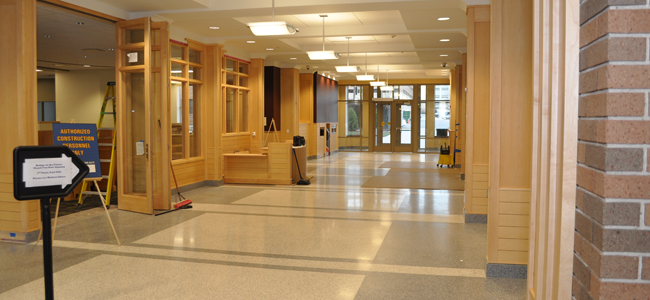Marquette University has a new seal. The updated seal comes after years of criticism from community members, over the seal’s inaccurate depiction of Father Marquette leading Indigenous people.
“As we have been called to reflect on our own symbols, it became clear that Marquette University needs a seal that aligns with our mission, vision and guiding values…” University President Michael Lovell said in a statement. “The updated university seal is a beautiful reflection of who we are and what we stand for.”
In addition to official university documents, the seal can also be seen on various locations around campus such as the Alumni Memorial Union or Raynor Memorial Library. The university said it is planning a phased process to update the seals in these locations across campus.
The updated seal artwork was done by Milwaukee based artist and Milwaukee Public schools art teacher, Kristelle Ulrich. Ulrich is also a member of the Oneida Nation.
“The narrative style’s connection to our Indigenous history, along with the classic Jesuit imagery, tells a story of a combined but independent history of our Indigenous nations and the Jesuit travelers,” Alex Liberato, former leader of the Native American Student Association and 2021 alumnus, said in the statement.
The updated seal features a blue and gold outer ring with the words “Ad Majorem Dei Gloriam,” the Jesuit motto that means “All for the greater glory of God.”
“It’s become increasingly clear that a lot of the assumptions that we have operated on in the past about what was normal and how things should work really excluded the voices of others and their realities in ways that are not compatible with the mission that we want to live out,” Jim Voiss, Vice President of Mission and Ministry, said.
The upper two halves of the seal honors Marquette’s Jesuit tradition. The left half honors the seven brothers of St. Ignatius’s family, on his mother’s side. While the right honors Jesus Christ through the depiction of a Christogram. The monogram was placed on the right to symbolize a rising sun.
“If I were to sit with Indigenous people to talk about some of the components, I think they could reconcile that there is an acknowledgment and visibility of them in a rich way…There’s a timeliness of this piece as well as a real anchoring of place and history,” Jacqueline Schram, special assistant for Native American affairs, said.
Schram is a member of the First Nations in Canada and was a member of the seal re-design committee.
“Our wild rice is no longer a composite image that flattens the diversity of Indigenous people. This wild rice is fluid and there’s movement and represents some of the original peoples that were here before Marquette and are still here,” Schram said.
The three stalks of wild rice are an homage to the presence of Potawatomi, Ho-Chunk and Menominee nations that existed and still exist on the land where Marquette resides.
The bottom third of the seal contains three waterways, representative of the Milwaukee, Menominee and Kinnickinnic rivers.
“There’s the vista in the back that evokes a sense of peace, but it also makes you ask what’s yet to come?, what’s beyond the horizon? There’s nothing that is stagnant about it and the work that we need to do,” Schram said.
This story is developing
This story was written by Megan Woolard. She can be reached at megan.woolard@marquette.edu or on Twitter @MeganWoolard4















